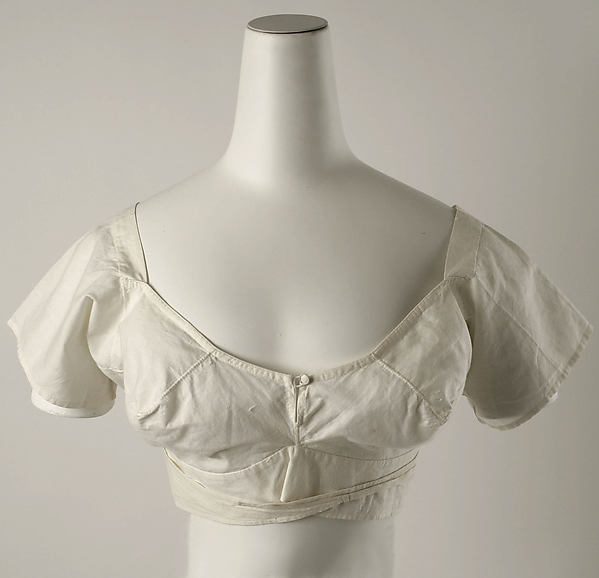I've run out of brassieres to feature, so am now moving on to clothing. I buy bits and pieces of vintage clothing when I can find it to study and to keep it from being thrown away. This dress was in the process of being renovated when the owner tired of it and put it away.
Fashion in 1913 was changing rapidly and one just couldn't appear at two events in the same season wearing the same dress.
Look at the original fashion illustrations on this page to see the inspiration for this dress. Waistlines had risen and hips were being given more emphasis with flounces and draping. Long skirts were tapering at the ankle--the infamous hobble skirt. All dresses of this time started out with a boned belt to which everything was attached. This was snugly fitted and usually fastened on the left.
Click on any picture to see the entire thing.
An underbodice, or guimpe, was attached first. This one has the sleeves in one with the body, kinono-style, which was in fashion at the time. Lace is attached where it will show, and the under fabric is pink silk georgette. The bodice snaps down the left side front, hooks securely to the belt, then the snaps continue around to the side. The rest of the bodice from the left front around the right and across the back to the left closure is attached to the belt.
Here is the back, showing the simple turned-under edge of the netting, which will not fray, and the georgette. This is gathered to a cotton twill tape and stitched to the belt.
Over the bodice goes this beautiful silk lace cape, edged with rose weighted silk, which covers the unfinished edges of the netting and meets at the middle front at the beltline. (I have it on inside out here, showing the seams.) Note how the lace is gathered at the bottom to make a drape at the waist. The other side has come unsewn. Look at the dresses for October 1911 and July 1911 at the link I provided above to see similar construction. It has been cut away at the front, but I believe it had been attached to the belt at center front and center back.
The other piece of this beautiful dress that remains is the top overskirt. The fronts are finished with the same rose weighted silk fabric. The underskirt, which is missing, probably was made of the rose weighted silk, which you can see is splitting very badly. This underskirt, like the bodice, would have been attached to the belt from the right side around the back to the side opening, and then finished with snaps to the front left.
To cover all the busyness at the waist, there would have been a boned sash, probably with long ends finished with lace or tassels.
Notice how the lace is gathered at center back for more draping. This would have been a diaphanous floaty rustling party dress!
The silk lace is still in excellent condition. The only material that is crumbling is the weighted silk, which is to be expected.
If anyone is interested in purchasing this "dress" for study or reconstruction, please let me know. I would love to see it re-made using this beautiful lace.










































